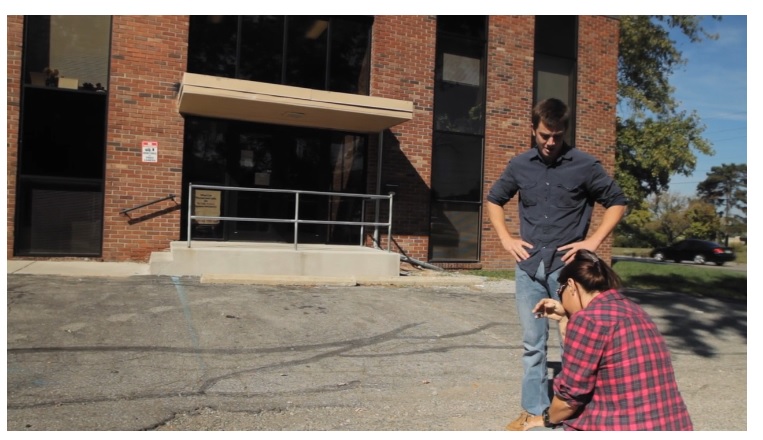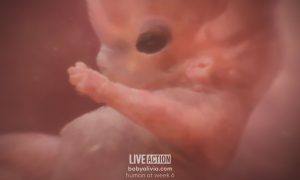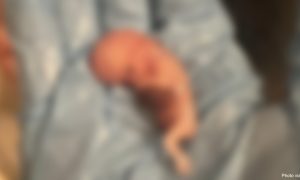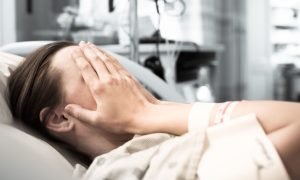What is it like for a young pregnant mother to enter an abortion facility, be escorted past pro-life protesters all the way to the procedure room where she meets the abortionist, and then has a change of heart and gets off the procedure table and walks out?
Then, what happens when that same woman is reunited with the son she almost aborted but instead, selflessly gave up for adoption?
This is the amazing story of courage detailed in the powerful documentary film, “I Lived on Parker Avenue.” The film, which highlights the beauty of adoption, features the reunion of the child who was nearly aborted that fateful day, 19-year-old David Scotton, with his birth parents, Melissa Coles and Brian Nicholas. The film is produced by Joie de Vivre Media, and was directed by Phillip Braun III. “I Lived on Parker Avenue” details a mother’s agony in choosing what’s best, the joy of creating a family, and a search to embrace the unknown.
Join David and his family for a special Facebook Live on this Facebook page at 7:45 EST on Thursday, March 8, and then switch over to ILivedOnParkerAve.com to watch for free at 8 PM EST.
Live Action News reached out to David and Melissa to get more intimate details on why the film was created and the emotions surrounding Melissa’s decision to get off that abortion table that particular day more than 19 years ago. In speaking with David and Melissa, I was especially struck by Melissa’s humility, her grace, and her courage to do the right thing at the very last moment. The lessons that can be learned from Melissa’s willingness to relive that day are deeply touching.
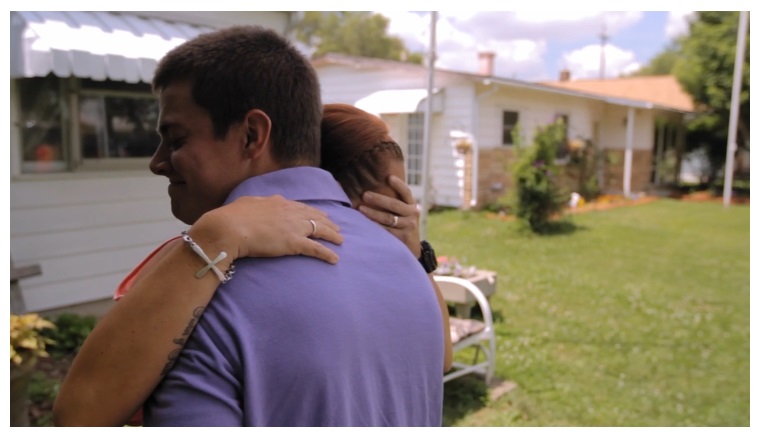
David meets birth mom Melissa in film, “I Lived on Parker Ave.”
The story for the film, “I Lived on Parker Avenue,” begins with David, who always knew that he was adopted. The film notes that David’s adoptive parents, Jimmy and Susan Scotton told him the truth from the time he was a small child. Then, at the age of eight, David started asking questions about his birth parents, and his adoptive father showed him a picture of the couple. That seemed to put David’s mind to rest for a while.
“I always did wonder why they put me up for adoption…I didn’t want to be different, I wanted to fit in with the crowd,” David states in “I Lived.”
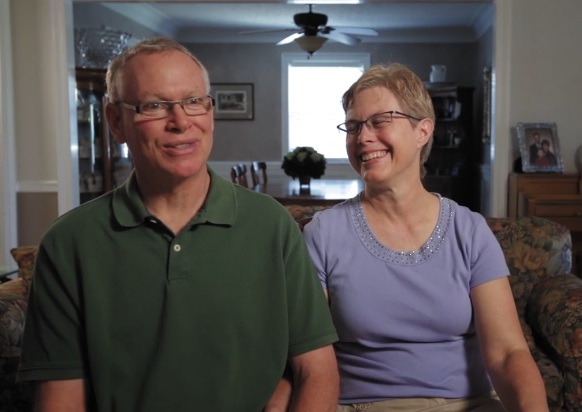 Adoptive parents (Image credit: “I Lived.”)
Adoptive parents (Image credit: “I Lived.”)
As David entered high school, he said that he had never publicly shared his story because he was aware of the stigma associated with adoption. But, when when David was a junior, he decided to tell the story to his classmates as part of a class project. Around this same time, David decided he wanted to know more. He told Live Action News: “Exactly one month from when I shared my story, I heard from a law firm that my birth mom wanted to connect with me.” He then states in the film, “At that point I freaked out, I got very emotional, I went outside — I had to catch my breath.”
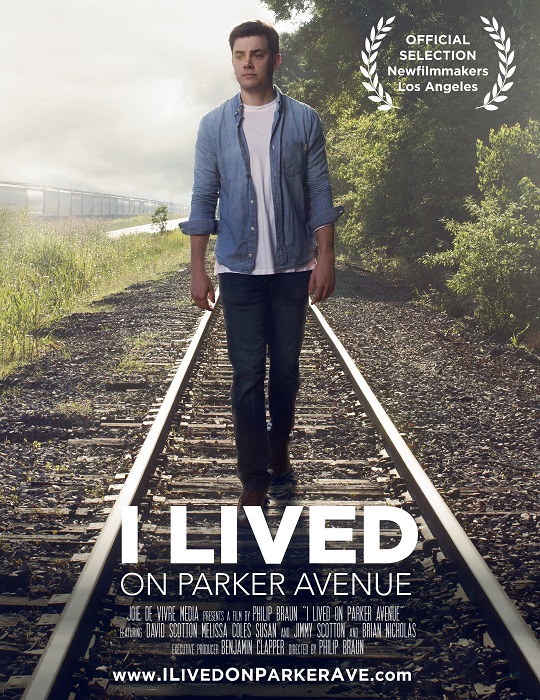
The “I Lived on Parker Avenue” documentary highlights adoption verses abortion.
David told Live Action News that his adoptive parents were very supportive and so, he decided to send Melissa, his birth mother, an update about himself through the attorneys.
Melissa recounted to Live Action News how the reunion process happened from her perspective. She said that as her son was nearing his mid teens, she began to think about updating her information, “I thought — I haven’t updated my records. And, the next thing I know — bam! It was just a matter of a few weeks and it all took place. I wanted to see him so bad, I wanted to hug him, I was 100% for it. Of course, I was scared. I didn’t know if he was going to hold resentment toward me…there were a lot of things going through my mind, I definitely wanted to see him.”
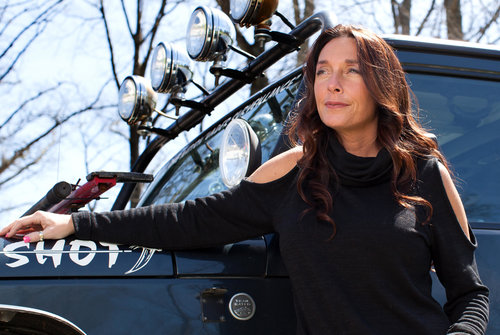
Melissa Coles (Image Credit: “I Lived on Parker Ave”)
David told Live Action News that he and Melissa connected on Facebook and began to talk online for about a year. During this time, David had also developed a relationship with Louisiana Right to Life. When they heard that David was going to meet his birth mom, they asked if he would be interested in documenting his story on film.
After praying about it, David agreed.
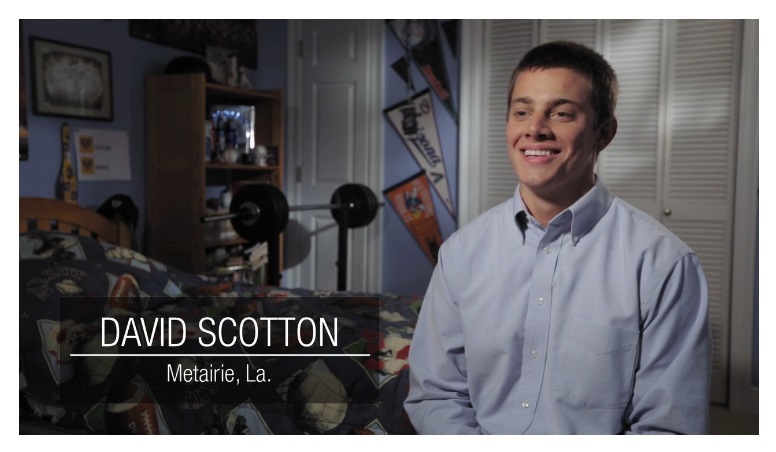
David Scotton (Image Credit: “I Lived”)
Melissa told Live Action News that she is very happy she and David were able to capture their reunion and embed forever the raw emotions they both felt. But, it wasn’t an easy decision to walk this out in such a public way. “I was really reluctant to do the film, I almost backed out a few times,” Melissa said, adding that, once she decided to go ahead with it, “I said I didn’t want anything scripted, I wanted it to be 100% unscripted from the heart and the soul.”
Melissa’s story is one that began where many other women find themselves. She recounted that, when she discovered she was pregnant, she didn’t tell anyone.
“When I found out I was pregnant, I think I was eighteen,” Melissa states in the film, adding that, “It just felt like a million bricks on top of me, like I couldn’t breathe.”
“I was very scared. I didn’t know how other people would react…But, the excitement part was there also, because the thought of me being a mom, I think every women likes that,” Melissa says in the film.
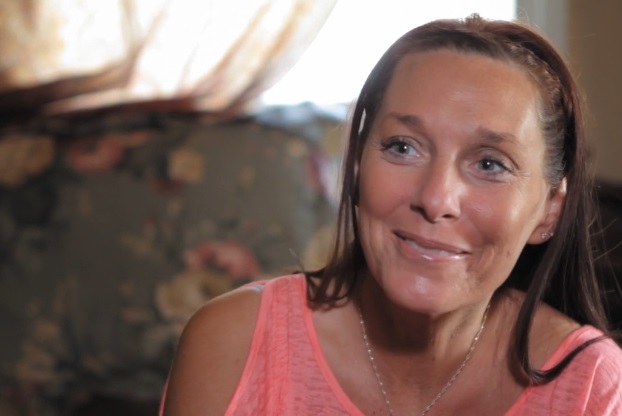
Birth mom Melissa Coles (Image credit: “I Lived”)
Tragically, like many women, Melissa felt that she could not bring a child into the world and that she had no resources to raise a baby. So, she made an appointment to have an abortion.
David’s biological father, Brian Nicholas, is also featured in the film. He recounted the drive to the abortion clinic in Indianapolis, “On the way over, it was just quiet — a lot of thinking. Your mind’s racing, basically.”
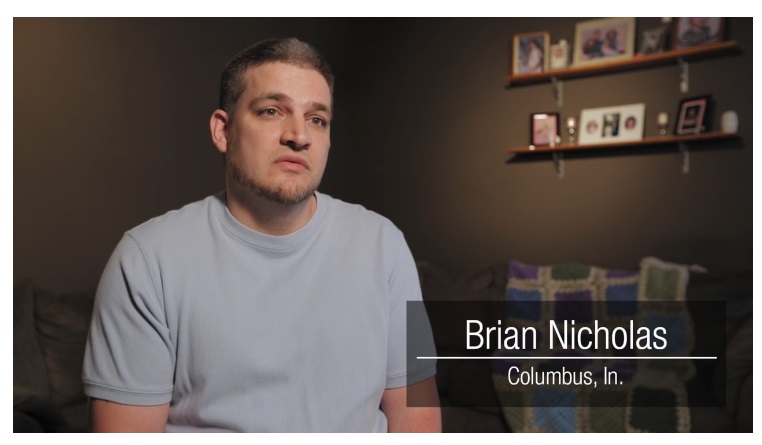
Birth father Brian Nicholas (Image credit: “I Lived”)
David told Live Action News that when he and Melissa first connected, she explained to him how she sought out the abortion. “She thought I hated her because she almost aborted me and then gave me up for adoption,” he said. “She could not have been any more wrong.”
David appeared to understand all his birth mother faced on that day, telling Live Action News: “It was a crisis pregnancy, she had no money, no way to provide the kind of life that she wanted for a child.”
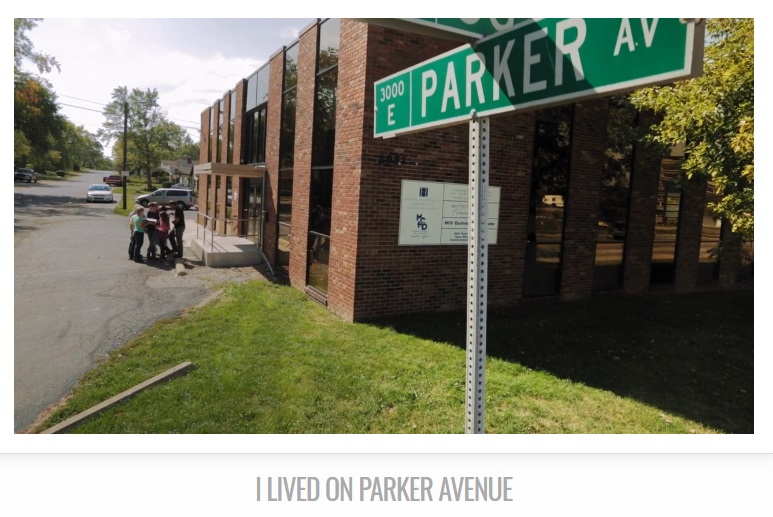
Abortion clinic in documentary film “I Lived on Parker Avenue.”
The film does an excellent job at capturing Melissa’s emotions on the day of her abortion appointment. She vividly recounts the pro-life protesters who were gathered outside along with the abortion clinic escorts, hovering around her as she darted inside.
“They put a blanket over my head and a radio here and a radio here and try to blast the sound away from all the [pro-life] protesters,” Melissa said in “I Lived.”
But, what happened as Melissa walked inside that abortion facility past the pro-life counselors outside changed everything. Melissa heard as one of the pro-life sidewalk counselors spoke up for her preborn child. This was the impetus for Melissa getting off that abortion table and leaving only moments later.
Melissa recounted this moment in the film, stating, “But, as I was walking in, throughout all the confusion and the noise, I remember — I remember this lady saying, ‘That baby has ten fingers and ten toes and you’re going to kill it.'”
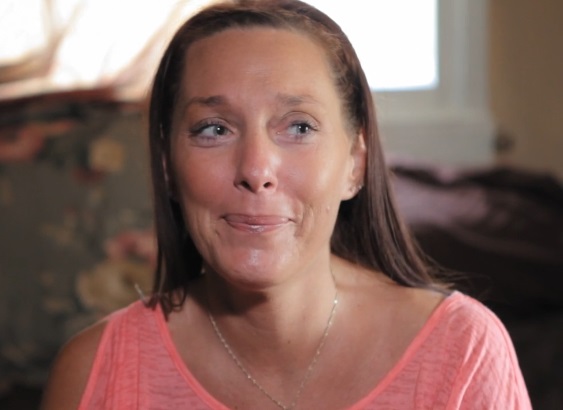
Melissa Coles recalls the words of a pro-life counselor she heard as she entered the abortion facility (Image credit: “I Lived”)
Melissa went on to describe how she lay in the procedure room, waiting for the abortion, seeing the doctor walk in, watching him wash his hands, and then put on his gloves. She noted that he sat on a little silver chair and scooted across the room. “He had me put my legs up in the stirrups. And, right as he went to touch me, I said, ‘I can’t do this,’ and I immediately put everything down…everything…and he just rolls his eyes and rips his gloves off, throws them in the trash can, and walks out the door and left me there.”
I asked Melissa what resonated the most from her time inside that abortion facility. She replied that seeing the abortion tools has become embedded in her memory.
“What I saw on the abortion table — I saw those tools. They looked to me — still to this day if I had to explain — it looked like what you see at the dentist office. When I found out years later — what the tools did — I can’t tell you the emotions I felt.
“Before the film ever started, I started writing a book about David. I got three-fourths of the way done, and I did research on those tools. I can’t explain to you what I felt — it was a mix of emotions. I ended up scrapping the book, I just can’t say everything I want to say. I would die for my child to keep them safe, I would jump in front of a bullet and not hesitate. But, when I was thinking about all of that [the abortion tools] — I was thinking — I would have done that to my child. And, it put me in a pretty dark place for a while and I stopped writing for close to a year after that. Literally, it was seconds away and I would have done that to my own baby.”
David and Melissa go to the abortion facility together, again. (Image: “I Lived on Parker Avenue.”)
Melissa deserves a lot of credit for getting off that abortion procedure table that day in the early 1990s. Her courage to leave that facility not only gave her son a chance at life, but also became a gift to another family. Melissa herself also won that day because so often women who submit to abortion carry the guilt of ending their child’s life with them forever. Still, Melissa did not feel very courageous as she exited that place of death. She remained scared as she left, and she still felt no less alone and very much in need.
She told Live Action News that, “They [the abortion facility] shield you as you’re going in — they don’t protect you as you leave.”
As a long-time pro-life sidewalk counselor myself, what transpired between the pro-life counselors outside and Melissa as she left the abortion facility also peaked my interest. In the film, Melissa recalled hearing things that, in many ways, made her feel judged. Accusations about how she had killed her baby — when the truth was, she had not.
“So, all those people, when I was walking out, they thought…I did it,” Melissa said tearfully.

Melissa Coles recalls leaving the abortion facility (Image credit: “I Lived”)
I am particularly sensitive to criticism of those who courageously go out to the steps of American’s abortion facilities to try and rescue babies and mothers from the grip of the abortion industry. I personally understand the frustration many who stand outside in extreme heat and bitter cold day-in and day-out, year after year feel. But, what I loved about David and Melissa is that they are truly grateful for everyone who stood in the gap. That said, as an activist who advocates for life, I wanted them to be honest about their thoughts regarding that day because there is much the pro-life movement can learn from how we are perceived when we cry out to women in crisis.
So, I asked David about this and he assured me that he was grateful for each person who was outside the abortion clinic that day. But, he felt that the pro-lifers could have reached out with more compassion as she left. “Most mean well, objectively,” David said, “But, some do not handle themselves well. They were shouting, ‘You killed your baby!’ when, in fact, she had not.”
Melissa was very tender when she spoke about the pro-life protesters, equally grateful as her son that they were outside that day. She explained to Live Action News, “I wanted so badly to go over to that woman and tell them that I did not do it. I didn’t know if they would believe me, and my mind was racing so fast.”
I asked Melissa what pro-life counselors can do to help women like her who change their minds before the abortion begins. She paused and she humbly told me, “They are already out there and trying to stop it — I hate to ask them to do any more.” But, then Melissa suggested that if the counselors can also try to position someone near the back door of the abortion facility, where the women exits, they might be able to offer her help.
If they could be near to the exit and have said, “Honey, I know you went through something traumatic, do you want to talk about it?” I think I would have had a little more peace because I was by myself throughout everything. I would have given anything for someone to have asked that and I could have told them I did not do it.
I probably would have grabbed hold of that person and just hugged and cried. It would have made me feel so much better if I would have had someone say, “I’m so proud of you.”
But, she reiterated, “I’m really glad that you guys go out there. There are people walking out — protesting is helping.”
David told Live Action News that his goal in producing the film is to reach those the pro-life movement would not typically reach, women who are on the fence and considering abortion. Despite all the talk about “options,” David said that even forty years after abortion was legalized, he doesn’t believe women are aware of the adoption option. And, if they are, they may be confused about the stigma behind adoption, just like his birth mother was.
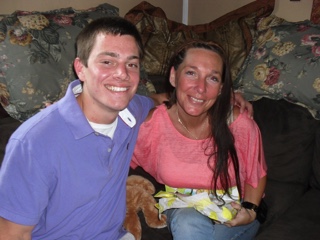
Melissa Coles and David Scotten (Image credit “I Lived on Parker Avenue”)
David has tried for years to reconnect with the pro-lifers who were outside that abortion facility the day his birth mom sought her abortion, but he has been unsuccessful. As for the abortion industry and specifically that facility, David believes that his birth mother was never told about adoption or offered that as an option.
“Lets be clear: that facility did not give her information in adoption. So, she left the clinic and thanks to the words of that sidewalk counselor, she knew that the child was special,” he told Live Action News.
“If it wasn’t for the adoption option, I wouldn’t be here today. Adoption saved my life and built a family,” David added.
Of his adoptive parents, David said, “Best in the world. I have the most amazing parents I could ever have. I’m thankful they’ve supported me for 24 years.”
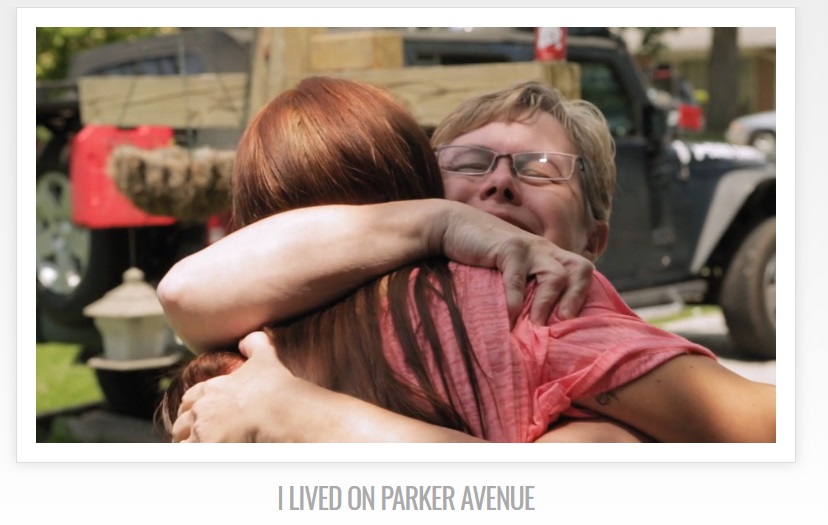
Birth mom Melissa and adoptive mom Sue meet. (Image credit: “I Lived on Parker Avenue”)
“I think the beauty of adoption is something anyone who is considering abortion should consider, ” Melissa told Live Action News.
You could be giving a family something they so desperately want. And, what it can give to both the baby and the adoptive family. Like David, he is in the second year of law school. I couldn’t have provided it for him at that time. It is beautiful. I think it’s the most unselfish thing a woman can give. You have to be the mom that has to let go in order to give the child to that parent that can’t let go. I had to let go in order for my child to have a better life. And Susan was the parent who couldn’t let go, who by the way I love deeply. She is a wonderful person and a wonderful mom.
David told Live Action News that in telling his story, he hopes that it will help others understand what a wonderful gift adoption can be. He wants to remove the stigma associated with adoption and change how the public might view a woman who chooses adoption or the relationship the adoptive child has with their adoptive parents.
In the documentary, Melissa spoke about letting go of David: “I didn’t want to let go…I was so torn…I knew I was doing the right things for him — not for me — for him. It’s kind of a bittersweet because — I wanted him.”
“I just wonder why me?” David asks in the film, “Why was I the one who was saved? It makes you feel like you have a mission in life,” he added.
“I Lived on Parker Avenue” is available to watch here and on DVD.
Join David and his family for a special Facebook Live on this Facebook page at 7:45 EST on Thursday, March 8, and then switch over to ILivedOnParkerAve.com to watch for free at 8 PM EST.

